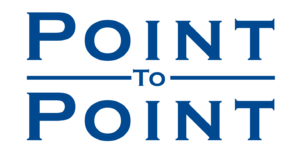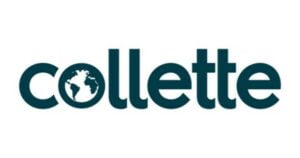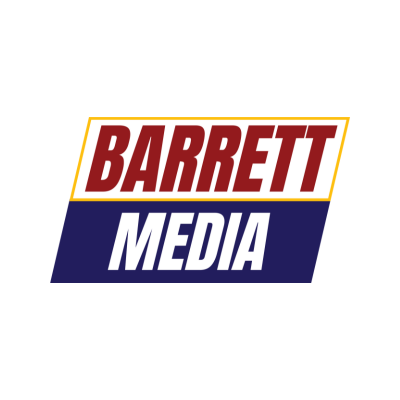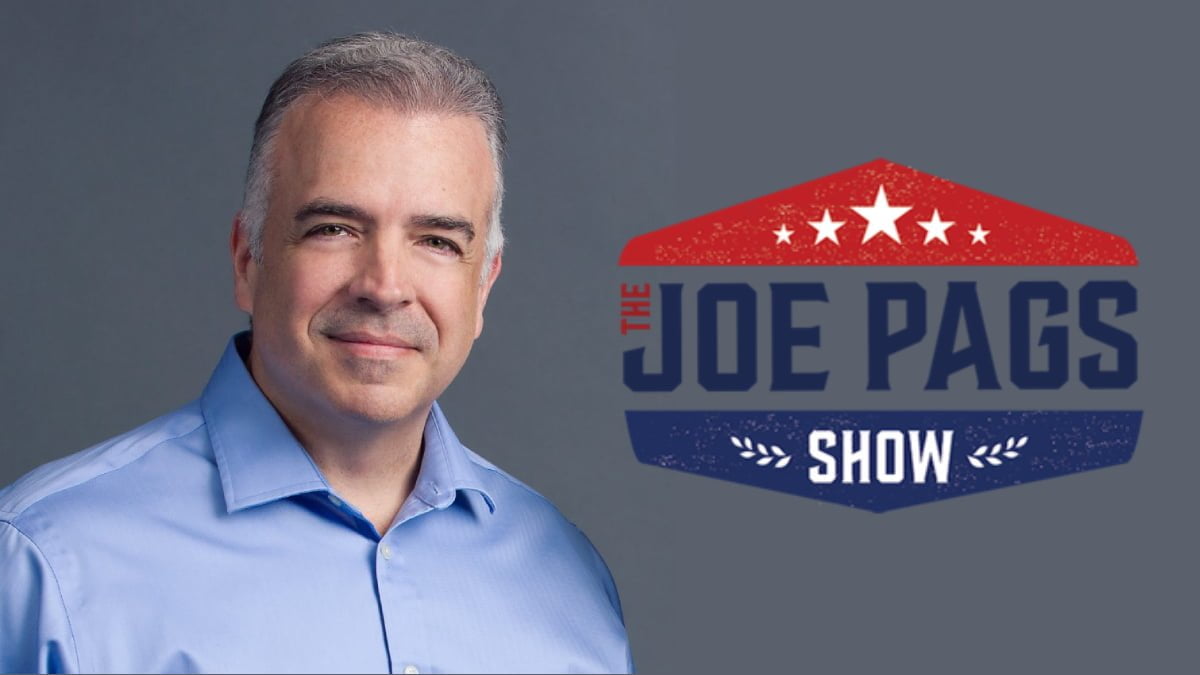We’re back for Day 2 of the 2024 BSM Summit in New York City at the Ailey Theater. This column will be updated throughout the day with key information and news provided from all sessions. BSM Chief Media Officer Dave Greene and BSM Reporter Derek Futterman will be adding details throughout the day, so check back to avoid missing important news and notes.
—
Barrett Media president Jason Barrett officially kicked off day two of the 2024 BSM Summit showing a slide on Steve Jobs and the famous apple slogan, “Think Different.” Barrett challenged the room to not only think differently but to also think bigger. “Without ideas and without thinking big, we can’t make big money,” Barrett said.
9:10-9:45 = The Keynote Conversation (Day 2) with John Skipper presented by Point to Point Marketing

- John Skipper, Meadowlark Media
Day 2 kicks off with the second keynote conversation as Barrett Media president Jason Barrett chats with Meadowlark Media co-founder and CEO John Skipper.
Skipper talked about the growth of Meadowlark and the transition from a podcast to shows which can be shown on multiple platforms. Meadowlark is also growing with its network partnerships and Skipper explained DraftKings is their partner which sells the advertising. “I want to be in the advertising business in the biggest possible way, but I don’t want to make the sales calls,” he said. “Most of our content is made to sell to somebody else. We are going to let someone else sell our ads and help with distribution. We want to do what we are best at and that is creating great content.”
Barrett brought up the fragmentation in podcasting and Skipper replied, “It’s too easy to do a podcast…the only place to live is in the top 3% and the others are doing shows for ‘friends and family’ only.”
Asked about the potential WBD/FOX/ESPN bundle, Skipper said, “Everybody wants one-stop shopping. One-stop shopping is gone…You’re not going to get everything you want for the amount you want to pay.” Skipper believes the way it has been announced is more of a test to see how the public and how the leagues respond to the possibility.
Barrett asked Skipper about the layoffs which have happened in the last few years across the media industry. Skipper explained, “There was a shift from investors wanting companies in growth mode to wanting companies in ‘make money’ mode and that is what has led to a significant amount of layoffs in the industry.”
Asked about Artificial Intelligence, Skipper said, “It’s going to create a lot of disruption. I’m still more fond of intelligence that walks with two legs. I am 68 and thinking maybe I can get through life without this sh**”
As for Meadowlark and what is ahead for his company, Skipper said they are working on some non-scripted and scripted series. “We are going to keep growing at the rate we are growing and take it from there,” he said.
9:45-10:20 = The Network Scoop presented by Backbone Networks

- Eric Spitz, SiriusXM
- Justin Craig, ESPN Radio
- Scott Shapiro, Fox Sports Radio
- Andrew Marchand, The Athletic
It was time to look at things from a national perspective as The Athletic’s Andrew Marchand led a session with leaders from SiriusXM, ESPN Radio and FOX Sports Radio.
The first topic was managing some of the talent on the national networks. Scott Shapiro from FOX Sports Radio said, “As long as you have two-way communication these relationships are not hard.” He also talked about how it has become more challenging, especially in a post-COVID world, with most of the people working remotely.
The panel discussed long-term pairings such as Mike and Mike or Mike and the Mad Dog and what their role was in trying to keep them together when you know the relationship is not great. Additionally, Marchand asked about how networks come up with pairings and Scott Shapiro said,”Sometimes you have to learn through trial and error…there’s no textbook that says how to put a pair together. You have to be patient sometimes and allow [the shows] to bake.”
The topic of finding talent was addressed and Justin Craig said, “Its about understanding the industry and talking to people…I am always looking.” Shapiro pointed out they have 600 stations relying on them for quality content. “Regardless of the platform, we need to find the best…we like to find people that have a point of view you can’t get anywhere else.”
Asked about the future and where everything is headed, Shaprio said, “I am very bullish on the future…if we are developing the right content, people are going to find it. Being in sports content and creating it is a blessing.” Craig added, “When breaking news happens there is nothing better than the live sports content arena…People live in their space, we have to live in their space with them.” Spitz said, “I am encouraged by what is going on and I love being in this space.”
Social media was another topic addressed and Marchand talked about how it can be both a positive and a negative when it comes to talent using social media. Justin Craig said, “It’s a double edge sword, we want everyone on social media, but you have to be careful what you do on social media.” Scott Shapiro added, “There is good and there is bad, but ulitmately its a great way for free marketing.”
Asked about what the BSM Summit might look like 10 years from now and what the topics will be, the panel agreed it will still come down to creating great content. Everyone knows there will be other outlets for distribution, but ultimately it will still come down to the content that is being produced.
10:20-10:55 = Making Sports Radio Work on YouTube presented by Steve Stone Voiceovers

- Phil Mackey – SKOR North
- Matt Moscona – 104.5 ESPN
Phil Mackey kicked off the session showing how SKOR North has grown in five years since they set out on a plan to move off of traditional radio. He shared five things they have learned since launching on YouTube which inluded: producing for YouTube, knowing niches get the riches, using SEO-friendly headlines, having great thumbnails and using product placement which has great value for local direct advertisers.
Matt Moscona then took the microphone to talk about what they are doing in Baton Rouge. He started out talking about using Periscope (remember Periscope?) and growing from a view viewers to a few hundred and grew from there to a few thousand viewers. Moscona said they looked at what the best stations in the country were doing as far as studios and ended up building out something based off of an old Mike and Mike set. He also talked about product placement and agreed with Mackey in that it is a great value for local direct advertisers.
A main difference between what the two are doing is that Moscona in Baton Rouge still has the radio station as the backbone. Moscona stressed the YouTube audience is not the same as your radio audience. “There are just people who live in that YouTube ecosystem who will never find me [on the radio].”
Moscona said there are two things you absolutely have to have to be found on YouTube, the first being a great thumbnail and the other is having an exceptional title. He pointed out YouTube is second only to Google in terms of search, so you have to have a description that fits well and will fit what sports fans might be searching for. He also added if there is a third factor in building out a YouTube strategy it is using shorts, a clip under 60 seconds.
10:55-11:05 = 10-Minute Networking Break presented by ESPN Good Karma Brands

11:05-11:40 = The Orange Crush presented by Core Image Studio

- Nick Wright – Fox Sports 1
- Danny Parkins – 670 The Score
- Andrew Fillipponi – 93.7 The Fan
- Damon Amendolara – Mad Dog Sports Radio
This session featured four Syracuse grads who have all excelled in their careers. SiriusXM’s Damon Amendolara led the discussion and mentioned some of the famous names that also attended Syracuse like Bob Costas, Mike Tirico and Ian Eagle.
All of the hosts talked about not setting out to do talk shows when they arrived, most of them wanted to do play-by-play. Amendolara talked about how even in college at a student radio station, there was so much competition you had to find a way to stand out and be different. He pointed out all three of the hosts next to him have succeeded based on what makes them different and
Nick Wright talked about how you know you are successful in this business. “I defined early on one of the true measures of success is when someone you don’t even know, never met in my life, thinks to themself, ‘I need to hear what he thinks about that game.”
Parkins, Fillipponi and Wright were all in college together and have all been successful. They agreed that their friendship was partially responsible for their success. Parkins explained how they were able to bounce things off each other and help one another and said they are still doing that today.
Amendolara talked about surrounding yourself with people who care as much as you do and want to be as great as much as you do. He believes that is part of what makes Syracuse special with the amount of talent and competition that exists within the broadcasting program.
Amendolara asked the panel about social media and content creation and where it is all headed. Danny Parkins said, “In general the industry needs to figure out a way to monetize it and to understand the value of it.” Fillipponi added, “I get people who know me more from my opinions on social than they do radio.” Nick Wright mentioned there are people, and admitted he used to be one of them, that aren’t always thinking about making a great show, but are more concerned with making a viral moment.
Amendolara pointed out how the three hosts are known for their strong takes but for the most part they are not heat of the moment comments. Instead, they are well thought out opinions. Parkins said his background on the debate team in high school helped him in that regard.
Amendolara mentioned getting a show rundown sheet with simply topics of things to talk about. He said it is important that you come up with the take that goes along with the topic. “You must have an opinion, you must have an angle…or you’re just talking to talk.”
11:40-12:10 = 2024 BSM Summit Awards Ceremony (Day 2) presented by Premiere Networks

- Chris Kinard – 106.7 The Fan
- Steve Cohen – Former VP of Sports, SiriusXM
The Mark Chernoff award, which goes to a sports program director who is excelling, was presented to Chris Kinard from 106.7 The Fan and Team 980 in Washington, D.C. Mark Chernoff himself spoke on Kinard’s success and talked about the number of duties Kinard has as he not only manages the two sports stations, but also a classic hits station and responsibilities for Audacy corporate.
Kinard said his 25+ year career has gone by fast and yet he is still incredibly excited about the business and where it is going. He thanked his team and said the award is really theirs and also thanked his mentors that have helped him along the way. “What a dynamic and special thing we have in sports radio,” Kinard said…”and I do think we have a bright future.”
The Jeff Smulyan award honors an executive who has excelled in the industry. Steve Cohen who spent four decades in the business and started at WFAN was this year’s recipient. This is the first time Smulyan has had the chance to present the award to a former WFAN employee, a station he started. Cohen would go on to develop the sports programming for SiriusXM and ended his career as a Senior Vice President when he stepped away in March, 2023. Cohen spent more than two decades with the satellite service.
Cohen mentioned when he first heard about a new station which was going to be starting up in New York, WFAN. “All sports talk radio? That’ll never work,” Cohen said and followed with, “Glad I was wrong!”
Cohen’s career at WFAN began as a board op as he worked his way up the ladder before being hired by SiriusXM to help build their NFL programming. Cohen thanked those that had helped him along the way and the people who he had the chance to work with and learn from.
1:15-1:50 = Secrets to Social Success presented by ESPN Radio

- Omar Raja – ESPN
- Annie Agar – Stadium
- Steve Braband – WWE
- Josh Fendrick – Overtime
Stadium’s Annie Agar hosted a panel of experts in the social space from ESPN, WWE and Overtime. Agar talked about the shrinking attention spans of viewers and listeners and how much content they have to choose from.
Steve Braband from WWE talked about short-form content and how important it is in humanizing their stars and noted it is the same for other athletes saying, “People can’t get enough of that content…We want to create “FOMO” with our audience…We want to serve fans wherever they are.”
Agar asked the panel how they stay current with all of the things that change within social media. Raja said, “I would think ‘create, create, create’ and not watching anybody else…I think that’s been my biggest evolution over the years is to take the time to watch what else is out there.” Braband added, “You really have to be a student at all times.”
Agar asked about live streaming and how important it can be especially to connect with your audience and fans. Bradband talked about not just doing it to do it, they want to make sure it is meaningful.” He added WWE has had conversations with all of the various platforms
Fendrick and Overtime have some very unique content with their partnership of the Overtime Elite basketball program and says they leverage all of the social platforms and stream to all of them whenever they can. He also said they make sure they have one or two people in the chats engaging with those who have joined.
Fendrick was asked about their strategy as far as posts and whether they are hitting the mark “We have had to be much more patient,” he said. He added that sometimes they will talk about making a change on a post fairly quickly, but generally try and preach that patience.
Fendrick also shared with the group to “Look at your own consumption of social media. What makes you stop and look at a post? Take that information and use it in how you are making decisions on your social strategy.”
1:50-2:25 = Winning in the Windy City presented by Collette

- Mitch Rosen – 670 The Score Chicago
- Maggie Gray – CBS Sports Radio
- Danny Zederman – ESPN Chicago
The next session featured two competitors in Chicago in Mitch Rosen of 670 The Score and ESPN Chicago’s Danny Zederman with the session being hosted by Maggie Gray.
Rosen has been with The Score for over 20 years and Danny Zederman was a weekend producer at the station around the same time.
As for the competition, Zederman said, “I’d love to say I think about what The Score is doing everyday, but with this day and age, everyone in this room is competing for eyes and ears with me.”
One big difference between the two stations is that 670 The Score uses Arbitron, ESPN 1000 does not. Gray asked Zederman how they measure success and compare themselves with their competitors without the ratings. “I actually root for The Score to succeed…there’s multiple ways you can measure success,” he said. He went on to add that if The Score is doing well, the format and radio are doing well and that is good for everyone.
Both stations are using multiple platforms including YouTube, Twitch, X, TikTok and Instagram to stream their programming. They talked about the monetization of those outlets and that we are all waiting to see what the best strategies are to do so.
When asked about how the format works best, Zederman said, “What makes this work is the talent..and the talent having a passion for something makes it better.” He explained that he feels fortunate to have a strong culture at ESPN Chicago and Good Karma Brands, genuinely affirming that it is a team sport with strong expectations.
Gray moved the discussion to explain the philosophy behind an unfiltered crosstalk podcast. The idea came about after strong feedback to the segment that takes place between Carmen & Jurko in middays and Waddle & Silvy in the afternoons. Rosen added that while the length of crosstalk can differ on a given day, it can represent the best content on the station during a given day.
Ahead of this past season, ESPN Chicago secured rights to the Chicago Bears, forging a partnership with the NFL organization. An event attendee asked Rosen about how he navigated a direct competitor becoming the flagship home of the team. In response, he outlined how he recognized it would be a challenge since being the flagship can augment cume during weekday programming.
“That was my biggest concern going into the season when a direct competitor gets an NFL team, but our brand shined,” Rosen said. “When it was all said and done, our brand, 6a to 7p, we did great during Bears season.”
2:25-3:00 = Clicks, Conversion and Content
- Kevin Clark – Omaha Productions
- Adam White – Front Office Sports
- Gary Schreier – Outkick
- Eliot Crist – Fantasy Life
Omaha Productions host Kevin Clark began the session by addressing the sentiment held by some professionals that words are not always the most profitable. Clark recently transitioned from working at The Ringer to Omaha Productions, and he began his career in print journalism as a reporter for the Wall Street Journal.
Front Office Sports chief executive officer Adam White feels that there are profitable opportunities in the written word and ability to build business plans around that. Gary Schreier, Outkick senior vice president and managing editor, explained that the written word has evolved into new means of dissemination.
Although Fantasy Life chief executive officer Eliot Crist did not want to disagree with King, he understands that there is a dichotomy between older forms of media and new media. As it pertains to newsletters specifically, he thinks that it is an opportunity to drive people to certain pieces of content to optimize attention spans.
Earlier in the day, Clark spent time exploring all three websites and observed that there is a preponderance of written content and newsletters implemented within the overall content scheme. Crist believes that the Fantasy Life brand, which launched two years ago with NBC Sports football analyst and fantasy sports commentator Matthew Berry, helped drive its audience through the newsletter.
Following his response, Schreier explained that he comes from an old-school kind of thought where writers should create a persona, communicate with the audience and keep a dialogue. Front Office Sports maintains a focus on the business of sports but tailors its content to different platforms, trying to appeal to the audience and the platform itself.
The challenge over the last several years for Front Office Sports was trying not to be identified as a trade publication. The company attained a quarter of a billion impressions during the month of January and continues to determine how it can cover the business of sports from their perspective. LinkedIn grants the company functionalities necessary to analyze what areas of the media industry are engaging with the content.
“We’ve seen massive upticks on LinkedIn. We’re the No. 1 sports programmer on LinkedIn at large. It’s a very random platform, but it’s led to a ton of success business-wise…. It’s a huge platform I think if you can figure out a way to lean into LinkedIn from a content side of things.”
Clark asked what he believes the advertisers care about, leading to White to elucidate the three groups of advertisers as divided by the company. As an example, White shared that Front Office Sports is working with Acura to reach a more sports-centric audience, providing the brand with accessibility to the audience at an optimal pricepoint.
For Schreier, establishing franchises helps continue to captivate consumers on a regular basis, which has led to a dedicated advertiser and the ability to monetize a new aspect of the brand. Crist concurred that every brand is different and referred to Front Office Sports as the standard in the newsletter space, revealing that Fantasy Life studies them to determine how to enhance their offerings.
Clark acknowledged that Peter King’s view is different being in the industry for several years and was curious to know about what growth looks like in the next five to 10 years. Schreier explained that every platform is, in essence, representative of a multimedia offering. Linear and digital need to be able to work together and exponentially improve each other’s value propositions, thus creating a means for growth.
White believes that the written word can serve as a catalyzing vehicle to leverage other media platforms. As a result, he is cognizant that it is important to remain shrewd and build sustainable franchises around them. Crist and his team at Fantasy Life have tried to leverage their brand through working with traditional media platforms in order to grow.
Front Office Sports is focused on leaning into news, scoops and analysis within the daily content strategy for the website. White finds that it tends to appeal to the audience and drive engagement across a variety of platforms.
At Outkick, Schreier had to adapt with the interminable nature of digital media and ultimately believes that, in general, less is more in the content landscape. At the same though, he understands that longer pieces can resonate with the audience, analyzing engagement time across a variety of work on the Outkick platform.
Fantasy Life has tools that work to simplify data for the readers so they are able to efficiently extrapolate information regarding complex and variegated topics. One out of every three adults in the United States have either played in a fantasy league or bet in sports, and Crist believes it creates an opportunity for journalism. He has found that people want to gather information from people they trust and that sports betting is something that consumers can easily see through.
3:00-3:10 = 10-Minute Networking Break presented by ESPN Good Karma Brands

3:10-3:45 = Riding The Revenue Train presented by Quu

- Stephanie Prince – Good Karma Brands
- Natalie Marsh – Lotus Communications
- Dave Greene – Barrett Sports Media
- Cody Welling – 97.1 The Fan
BSM Chief Media Officer Dave Greene hosted a panel focused on revenue and started by asking questions to the panelists pertaining to their specific backgrounds and how they have built their brands.
Natalie Marsh, general sales manager at Lotus Broadcasting responded by explaining how she was part of building the Las Vegas Sports Network as the marketplace continued to add more professional sports teams. Next, 97.1 The Fan station manager Cody Welling spoke about the business strategy at 97.1 The Fan and how they have been able to recoup previous losses in the first quarter. Ohio legalized sports betting at the start of last year, and he hopes to be able to capitalize on revenue flow from the category.
To conclude the opening question, Greene asked ESPN West Palm market manager Stephanie Prince how the performance in Q1 has impacted the strategic plan for the station, to which she outlined a strong start to the year in southern Florida.
The creative process across these outlets are optimized with several departments in order to cultivate overall success. With the Super Bowl recently taking place in Las Vegas, Marsh knows that there is a combination of what you can do and how you can be creative. At 97.1 The Fan, Welling says that some of the best ideas come from talent. He and program director Matt Fishman put shows on location approximately 114 times last year, always determining if it is a good fit for the station, its listeners, its clients and with overall revenue.
“I think it’s just really making sure everyone’s involved that has a stake in it,” Prince added. She also opined that the talent at ESPN West Palm are among the most creative people in the building.
Marsh realizes that while some talent may perceive their ideas to be amazing all the time, she welcomes all of them and gives them the ability to explain their thought processes. Welling concurred that talent are involved in the creative process, especially being on a station that has live programming for 14 hours per day. He shared an example of a ticketed event with the afternoon drive show, Man and Bone, pertaining to a partnership with Turkey Bourbon.
“If the listeners are paying to see the talent, it’s got to be good; it’s got to be worth their while,” Welling said.
Prince divulged that ESPN West Palm talent are on several meetings, including a weekly marketing meeting as well. By including them in the process and understanding each other’s roles, they are able to more effectively conjure ideas and help render it into a distinctive possibility. Greene understands that it ties in to doing events and also has an inherent risk and reward factor.
Prince shared that West Palm Beach, Fla. is a transient market where there is a lack of alignment in fandom, creating a challenge in identifying a primary audience. The outlet has determined, however, that high school football is popular in the area and produces successful players in the locale. The station holds annual events surrounding the sport and spotlights the athletes as well, many of whom have ended up playing in the National Football League.
In Columbus, 97.1 The Fan is within a building that also includes a television station. This allows Welling to pivot quickly on an expense when he sees the industry moving in a different direction. He feels the radio station pays its personnel well and wants to break even when it sends its talent to Media Row in addition to having suites for the Ohio State Buckeyes and the Columbus Blue Jackets. As a result though, Welling stated puts more pressure on the sales department to generate revenue.
Lotus Broadcasting has had discussions surrounding artificial intelligence and how it can help expedite certain jobs to optimize workflows and compensate personnel. Marsh shared that radio has been dying throughout her entire life, yet it always comes back to life and continues to sustain and thrive in the multiplatform media ecosystem.
“One of the things that keeps me up at night is, ‘How do I make sure that everybody has a livable wage and yet my P&L still looks good,’ without putting all of the pressure on the sales team. I used to be on that end, so I know what that feels like…. We’ve just done a lot of talk and we’ve had a lot of group meetings about, ‘Where are the places we can get more efficient?'”
3:45-4:20 = The Fix presented by Motor Racing Network

- Rod Lakin – Sports Radio WIP
- Matt Fishman – 97.1 The Fan
- Dave Tepper – Newsradio KOA
- Jeff Rickard – WFNZ
The final panel of the 2024 BSM Summit featured four radio executives from across the country discussing four primary topics concerning the industry – revenue; innovation; discovery and erosion.
The panel began with Rickard asking how radio can reach the bottom line again, leading 97.1 The Fan program director Matt Fishman to emphasize the importance of ideas and innovation. In order to solve the revenue problem, SportsRadio 94WIP brand manager Rod Lakin also believes distribution is part of the equation as well. He does not believe there is enough conversation surrounding getting that part of the industry correct amid other business challenges as well.
“Digital is really where all the innovating is,” added Dave Tepper, program director at KOA NewsRadio, “but at the same time, one thing I found is you’ve just got to get your talent and yourself with your salespeople again and make sure they still understand what the heck is going on on their radio station.”
As it pertains to innovation within the space, the panel highlighted several examples taking place around sports and media. One of these is the pitch clock, which dwindled the average game time of a Major League Baseball contest to two hours and 45 minutes, down by 26 minutes year-over-year. Other examples include FOX Sports Radio personality Rob Parker and several ex-athletes launching Sports Rap Radio in Detroit, along with AI-powered radio stations in Nashville, Tenn.
“You have to recognize where you are, where you want to be just by checking out other brands and how they present themselves – whether it’s through a live YouTube or what they’re doing with snackable content,” Fishman said. “Really today’s point is, ‘Do you have the support to take risks and innovate?'”
WFNZ program director Jeff Rickard added that he enjoys watching the show Undercover Boss because it grants the chief executive officer of a company the chance to observe the activities of their employees. During his workday, he tries to connect with talent and see what they are talking about while also being accessible to answer any questions.
Fishman led the discovery topic within “The Fix,” explaining that for the stations that may have smaller part-time budgets and limited on-air hours, the question needs to be asked if aspiring professionals even need these outlets in the end. With technological innovation, there are more opportunities to create content and promulgate their voice en masse.
Lakin explained that podcasts expanded the opportunity for professionals to assimilate into the business. With play-by-play rights and other program offerings, it can sometimes be difficult to find time to broaden the rotation.
Fishman then asked Tepper about the best ways to find new talent to create programming time. Replying to the question, Tepper revealed that he uses TikTok for 45 minutes every night to see who is cutting through with an audience and could potentially work on the air in the future.
“There are plenty of places to go fishing these days,” Rickard said. “Plenty of places to go fishing.”
Rickard enjoys the fact that budding industry professionals have more options than simply radio stations. With some of his young talent on the air, he emphasized that he will allow them to promote their own content while promoting the radio station at the same time, leveraging the different audiences and bolstering overall reach. Once they are at the radio stations, Rickard and Tepper have found that the stations have improved their metrics and have been enjoyable endeavors in which to partake.
The panel concluded with a discussion on erosion, presenting an image of a variety of metrics detailing the appeal of content for different demographics broken down by age, gender and ethnicity. With dwindling attention spans in the marketplace, it is essential to give young people content as it resonates with them in the present moment. Ultimately, they will become the age 25-54 demographic off which radio stations utilize in part to determine success.
Fishman agreed with a point made by Lakin about being everywhere possible and finding ways for hosts to appeal across several demographics. Rickard continued off of that point by emphasizing how necessary it is for talent to resonate with the audience.
After taking questions from the audience, “The Fix” panel thanked Barrett for hosting the panel and expressed
4:20-4:30 = JB Wraps Up the Summit
Barrett Media president Jason Barrett presented his closing thoughts to end the 2024 BSM Summit, providing an overview of where he believes the sports media industry is moving. Through the sessions across the two-day conference, he encouraged everyone to take the extra step by utilizing the information they gathered and applying it to their brand.
Reviewing future innovations, Barrett highlighted several emerging technologies and innovations in spaces. He implored audience members to experiment with ChatGPT and become more familiar with the platform. Additionally, he shared examples of personalities using social media platforms to reward the audience members. Barrett also discussed the variety of questions being included on The Stephen A. Smith Show from which Smith creates an entertaining segment that is subsequently distributed on social media.
A clip from Freddie and Harry that Barrett heard on the air encapsulated a unique moment that allowed the audience to be part of the show. He compared it to approaching a home with a ‘do not disturb’ sign, something that ultimately minimizes this facet of audience engagement.
The final clip Barrett demonstrated was the reaction to a Build-a-Bear featuring the voice of a departed relative who used to frequently call into 1010XL. Station producer Emmanuel Thalerand pulled clips from his calls over the years and sent the recordings to program into the stuffed animal. With the top two threats of time and choice, it is essential that the audience remains engaged and captivated by the content, something that Barrett believes can be achieved by taking the extra step.








